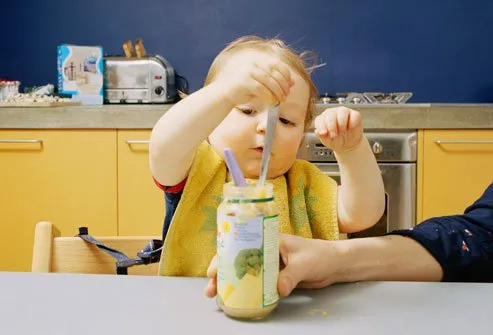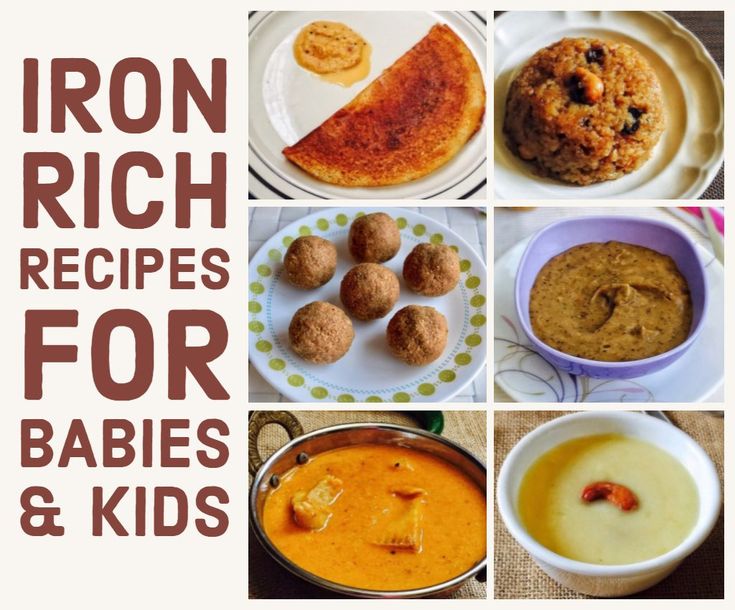When do you stop feeding baby food
When to end purees and start soft table foods with your infant
Julia was delighted to begin solid foods with her 6-month-old son Brandon. Brandon was a champion eater and quickly learned to manage the iron-fortified rice cereal fed to him from a spoon. As Brandon grew, Julia began introducing pureed foods to provide a more balanced diet in addition to breast milk. By 8 months, Brandon grew impatient for his mother to spoon purees into his mouth. At 10 months, Brandon was communicating he was hungry even though he had eaten three bowls of puree an hour earlier. Julia was wondering why her son had such a veracious appetite and wasn’t content after eating
It is a pleasure to introduce infants to the new tastes of solid foods at 6 months of age. Watching their little tongues learn to move food from the front to the back of their mouths to swallow is mesmerizing. And as soon as they have mastered this skill, parents love to start introducing other foods in pureed form, such as fruits and vegetables. Later, protein sources such as meat, fish, or legumes are also added to the purees to provide a balanced diet in addition to breast milk or formula.
However well intentioned, some parents continue to provide purees rather than moving onto solid table foods because:
they fear that their baby won’t eat enough;
their baby will not be able to mash the soft foods with their gums;
their baby will choke on non-pureed foods; or
the parent enjoys spending time feeding their little one with a spoon.
Reasons such as these may lead parents to offer purees longer than is recommended.
Breastfeeding Bootcamp
Includes 16 lessons.
It doesn’t matter whether you are a new mom or if this is your second or third child: breastfeeding is not always easy. Each baby is unique, and your body is also…
View contents
Newborn Care
Includes 8 lessons.
The first three weeks of life are key to your baby’s development. What the newborn feels during this time constitutes their first experience of the world, and will…
View contents
Baby cereals and purees are only needed during the first months of learning to eat solid foods. Babies need to learn to control their tongues to move the food from the front of their mouths to the back of their mouths to swallow. Purees allow them the perfect consistency to master this skill. The next step is for them to accept food into their mouth and learn to chew the food with their gums before swallowing. This natural transition from swallowing a liquefied food (puree) to breaking down soft foods (chewing) helps prepare babies for feeding themselves independently.
Babies need to learn to control their tongues to move the food from the front of their mouths to the back of their mouths to swallow. Purees allow them the perfect consistency to master this skill. The next step is for them to accept food into their mouth and learn to chew the food with their gums before swallowing. This natural transition from swallowing a liquefied food (puree) to breaking down soft foods (chewing) helps prepare babies for feeding themselves independently.
When parents continue to offer purees rather than soft table foods, there are a few issues that can arise, including:
Babies take a passive role in eating because the parent is directly involved with spoon-feeding. This can interfere with the baby’s natural hunger and satiety responses;
It can be difficult for babies to accept foods with different types of textures because they are not used to feeling all the unique ways that solid foods feels in the mouth;
Babies can choke if they think they are supposed to swallow everything in their mouth without chewing. They need time and practice to learn to chew before swallowing; and
They need time and practice to learn to chew before swallowing; and
Purees pass through the stomach faster than solid foods because they are already partially broken down before being swallowed. This can lead to feelings of hunger and stress about when the next offering of food will occur.
To help your baby avoid these and many other issues around feeding, it is recommended that purees are phased out and soft, solid foods are introduced as soon as your baby can move foods easily from the front of their mouth to the back to swallow. This usually happens for most infants by 6-8 months of age. After your baby has mastered this skill, you can start providing foods that the rest of your family is enjoying. You can offer well-cooked, mashed, or ground fruits and vegetables, mashed potatoes, sticky rice, or wheat-free dry cereals like Cheerios that have been broken in half in addition to breast milk or formula.
By 7-10 months, most infants are able to eat chopped cooked vegetables, canned or cooked fruits, cheese, mashed cooked dried beans, strips of toast, crackers and dry cereal, as well as breast milk or formula.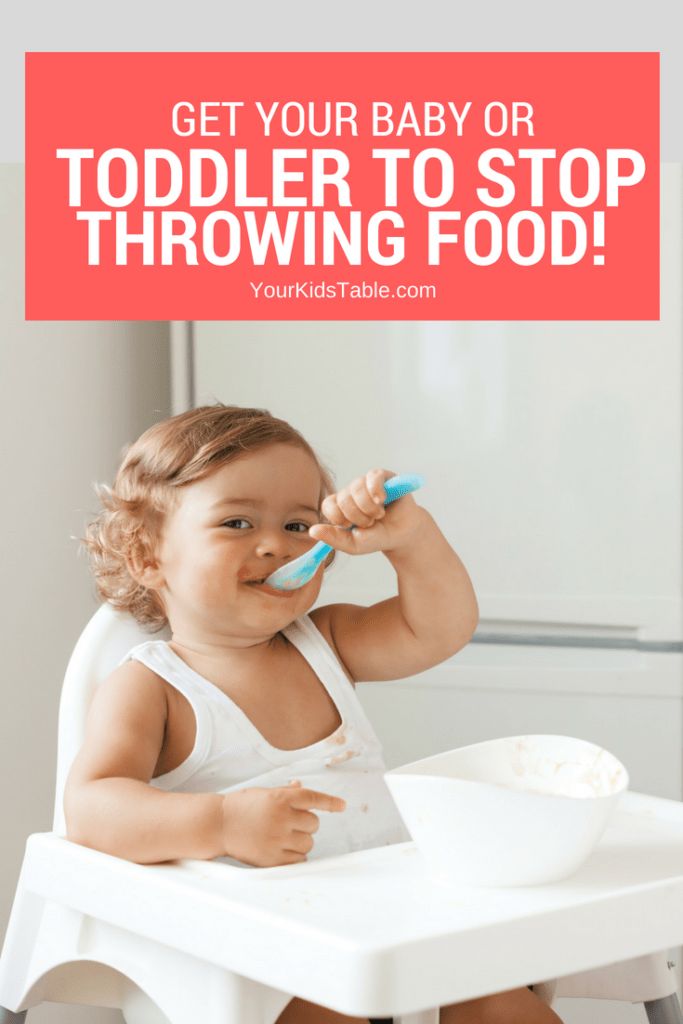 And by 9-12 months, most babies can eat cut up soft cooked foods, cut up soft foods like bananas or peaches, tender chopped meats, dishes with noodles that are cut up, dry cereal, toast, crackers, eggs, and cheese, in addition to breast milk or formula. This progression is to prepare your baby to move onto being a toddler on their first birthday and be able to eat everything from the family table that is soft. Remember to avoid foods that can cause choking like whole grapes or sausage rounds. Meat should continue to be cut up into small pieces. Whole pasteurized milk can be given in place of breast milk or formula.
And by 9-12 months, most babies can eat cut up soft cooked foods, cut up soft foods like bananas or peaches, tender chopped meats, dishes with noodles that are cut up, dry cereal, toast, crackers, eggs, and cheese, in addition to breast milk or formula. This progression is to prepare your baby to move onto being a toddler on their first birthday and be able to eat everything from the family table that is soft. Remember to avoid foods that can cause choking like whole grapes or sausage rounds. Meat should continue to be cut up into small pieces. Whole pasteurized milk can be given in place of breast milk or formula.
How to Keep Your Teen From Becoming a J@ck@$$
Dr. Deanna Marie Mason PhD
This practical hands-on book explains how to help teens in the process of finding themselves as they grow into adulthood. It is a unique, special guide because it shares teens’ perspectives on what they need to become the people of their dreams…
View contents
Proactive Parenting: How to Raise Teenagers with Values
Dr.
 Deanna Marie Mason PhD
Deanna Marie Mason PhDCyberbullying, sexting, alcohol, drugs, unwanted pregnancies, bullying, academic disinterest, and eating disorders are just some of the worries parents face today. However, these situations or behaviors can be avoided if children are educated in values…
View contents
Allowing your baby to grow and adapt their eating habits during the first year of life, as their development permits, will set them up to learn to accept and enjoy a wide variety of foods that support a healthy diet. They will also learn to take more control over eating enough food to keep their bodies satisfied between meals and snacks. Encouraging your baby to transition from purees to solid foods is a wonderful way to support their growth and development.
Sources:
Satter, E. (2000). Child of mine: Feeding with love and good sense. Boulder, CO: Bull Publishing Company.
Swarzenberg, S. Georgieff, M. & Committee on Nutrition. (2018). Advocacy for improving nutrition in the first 1000 days to support childhood development and adult health. Pediatrics 141(2), doi: 10.1542/peds.2017-3716.
Pediatrics 141(2), doi: 10.1542/peds.2017-3716.
World Health Organization. (2003). Feeding and nutrition of infants and young children: Guidelines for the WHO European Region. Denmark: WHO Region Publications.
Share article
About the instructor
Proactive Parenting
Dr. Deanna Marie Mason PhD
More than 20 years of clinical experience helping families:
Bachelor's Degree in Registered Nursing, Master’s Degree in Pediatric Nurse Practitioner and PhD in Nursing. University professor, patient education specialist, pediatric researcher, published author and reviewer to first-line international scientific journals, continuous philanthropic activity related to health promotion and education, wife and mother of two children.
Solids, Finger Foods, and More
Written by Gina Shaw
In this Article
- Baby Milestone 1: When They Can Start Solids
- Baby Milestone 2: When They’re Ready to Move From Puree to Chunks
- Baby Milestone 3: When They Can Sit in a High Chair
- Baby Milestone 4: When They Can Manage Finger Foods
- Baby Milestone 5: When They Start Using Spoons
- Baby Milestone 6: When They Can Try Highly Allergenic Foods
- Baby Milestone 7: When They Can Drink Water
- Baby Milestone 8: When They Can Completely Feed Themselves
There are many milestones that need to be achieved when a baby is ready to start to eat solid foods. Here are some of the big ones.
Here are some of the big ones.
Baby Milestone 1: When They Can Start Solids
Most pediatricians, and the American Academy of Pediatrics, recommend introducing solid foods to babies when they are between ages 4 and 6 months. That’s when they start to lose the “tongue-thrust reflex” or extrusion reflex, which is important for sucking the breast or bottle when they are younger, but interferes with feeding. Babies at this point can also lift their heads up independently and hold their necks high.
If your baby is around this age, can sit up well with support, and shows interest in the foods they see you eating, it’s probably a good time to venture into feeding your baby solid food. If your baby is exclusively breastfed, it is recommended that you wait until they are 6 months to start solids.
Baby Milestone 2: When They’re Ready to Move From Puree to Chunks
“Chunking up” babies’ food is a process -- obviously, they shouldn’t go straight from rice cereal to raisin bran. But after the first few weeks of adjusting to eating rather than just drinking their food, your baby should be ready to handle a little more texture in solid foods.
But after the first few weeks of adjusting to eating rather than just drinking their food, your baby should be ready to handle a little more texture in solid foods.
Introduce new textures slowly. Good starters are mashed bananas or mashed avocados. You can also use the “staged” store-bought baby foods -- going from the smooth puree of stage 1 to the slightly thicker stage 2 and then the chunkier stage 3 by around 9 months of age. (Babies don’t necessarily have to have a lot of teeth to handle more texture in their foods -- they can often gum soft foods very well!)
Baby Milestone 3: When They Can Sit in a High Chair
When babies are ready to eat solid foods, they can sit upright with support and hold up their head and neck. They're capable of sitting in a high chair! That's a serious milestone, but you'll need to follow these safety rules: Always buckle a baby into their chair for safety, even if they are unable to get out with the tray in place. As they get older and become more active, they may be able to squirm out. It is a good habit to buckle a child as soon as you place them in their chair -- even if you think there's no chance they could fall out or climb out. You may get distracted for a moment, which happens really easily when we are trying to do a million things at once!
It is a good habit to buckle a child as soon as you place them in their chair -- even if you think there's no chance they could fall out or climb out. You may get distracted for a moment, which happens really easily when we are trying to do a million things at once!
Baby Milestone 4: When They Can Manage Finger Foods
Babies between ages 7 and 11 months usually tell you they’re ready to eat more grown-up foods by trying to grab them from you. Almost any food that is healthy and nutritious and has a soft texture makes a good finger food, if it’s cut small enough: diced pasta; small pieces of well-cooked vegetables such as carrots, peas, or zucchini; and pea-sized bites of chicken or soft meat. Small, unsweetened round cereals and cereal puffs are also a good choice. Avoid feeding your baby grapes, hot dogs (even cut up), nuts, and hard candy, as they are choking hazards.
At first babies “rake” food into their hand, but soon they develop the “pincer grasp” that allows them to pick up small objects between thumb and forefinger. At that point, your baby can become a pro at self-feeding, so encourage finger foods and let your baby explore!
At that point, your baby can become a pro at self-feeding, so encourage finger foods and let your baby explore!
Baby Milestone 5: When They Start Using Spoons
Almost as soon as babies adjust to being fed with a spoon, they'll want to hold and grab the spoon themselves and put it in their mouths. That doesn't mean they're graceful, of course.
Most babies don’t learn to use a spoon effectively until after their first birthday, but let a younger baby who’s interested give it a whirl for practice. Try giving them a soft-tipped spoon to hold while you feed them with another. They can get used to holding the spoon themselves and will also be distracted from grabbing yours.
When you think they are ready to actually navigate the spoon into their mouth, try thicker, stickier foods like yogurt, mashed potatoes, or cottage cheese. Another tip: Put some cream cheese on the spoon and then a few pieces of O-shaped cereal on top. The cream cheese won’t fly everywhere, and the baby can get the experience of actually getting the cereal into their mouth.
Expect a mess! Use a plastic or other waterproof bib, and put a mat under the high chair to make cleanup easier.
Baby Milestone 6: When They Can Try Highly Allergenic Foods
Some pediatricians still recommend waiting until children are at least age 1 before offering them certain foods that are considered highly allergenic, like eggs or fish. But current research doesn’t demonstrate any benefit to waiting past a certain age to introduce these foods, unless you have a significant family history of food allergies or other reasons to believe your baby may be predisposed to them.
There is no evidence that introducing highly allergenic foods to children under age 1 makes them any more likely to be allergic to them, and the American Academy of Pediatrics (AAP) now says it’s fine to give these foods before the baby's first birthday. Many pediatricians are still very cautious about shellfish and peanuts, however, because allergic reactions to these foods can be particularly dangerous.
Baby Milestone 7: When They Can Drink Water
Babies don't need water during their first 6 months of life. They get all the water they need from breast milk or baby formula. Babies under age 6 months should not be given any water at all, because it’s easy to fill up their tiny stomachs -- and they should be filling up on the nutrients they receive from the milk to grow. Once they start eating mostly solid foods, around age 9 months, they can start water with meals using a sippy cup.
If your older baby shows an interest in water that you’re drinking, there’s no harm in letting them have a few sips. Just don’t let it replace the nutritious breast milk or formula they should be getting.
Baby Milestone 8: When They Can Completely Feed Themselves
Mastering eating with utensils is a long process. Most babies do not become really skilled at it until they are well past their first birthday. Encourage your child to practice safely, and again, be prepared for a little mess.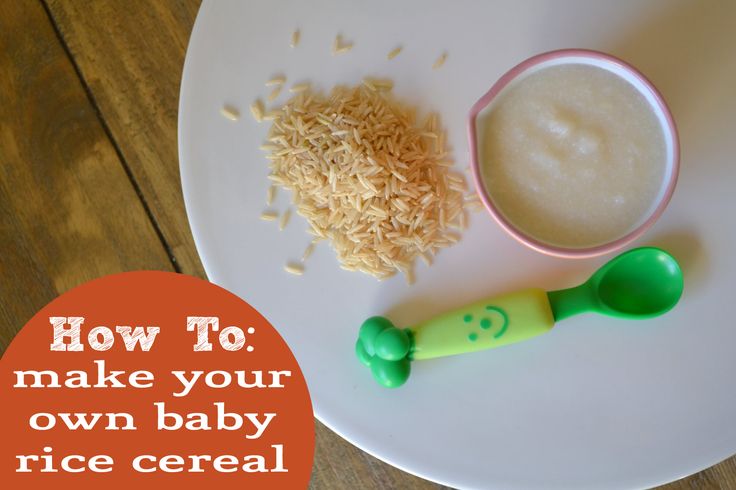 (How else will you get the “oatmeal in the hair” pictures that will embarrass them years later?)
(How else will you get the “oatmeal in the hair” pictures that will embarrass them years later?)
Feeding a baby - a modern view of a breastfeeding consultant
02/06/2022
Feeding a child - a modern view of a breastfeeding consultant
Formula Feeding
If, for some reason, the mother is unable to breastfeed, switching to formula is the best option for her and her baby.
The mixture is prescribed by a pediatrician after consultation and the mother's indication of her desire to switch to artificial feeding.
The choice of formula depends on what stage of development the baby is at, whether it is introduced from birth or later, to solve what problems.
Whatever mixture you choose, only the child will tell you whether it suits him or not - if he does not have allergies, he gains weight and gorges, then the formula has come up.
Important things to know about infant formula:
- Follow the instructions on the package exactly when preparing formula.
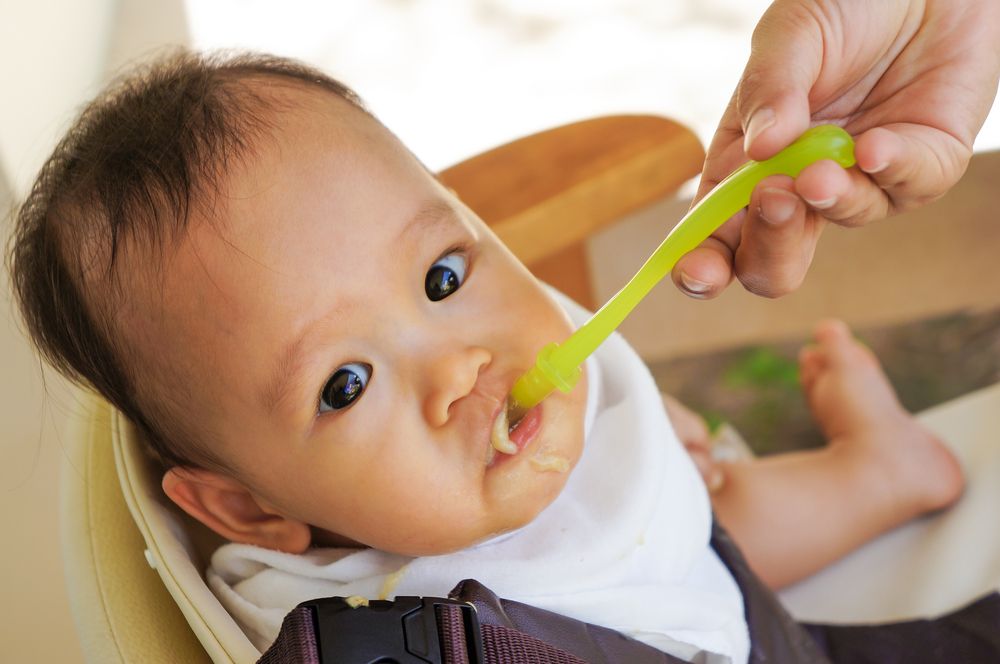
- The type of milk on which the formula is based does not matter much.
- Cans are usually labeled with 20-30% more serving size than required by the child.
- Formula should be given along with probiotics.
- On IV it is important to monitor the weight of the child, the quality and quantity of urine, and depending on this, to look at whether to add the amount of formula or not.
- On IV, one feeding can be divided into 2 times, as it takes longer to digest. For example, you can give a second portion of the mixture 20 minutes after the first feeding.
- The power supply mode of the IV can be adapted.
How to Separate Feeding and Sleeping
For children on IV it is important to follow a feeding schedule so as not to overload the digestive system.
Decide how many feedings your baby needs. With the remaining feedings, you can reduce the amount of formula in the bottle by 20-30 grams every night until you get to 30-50 grams, at which you will simply stop offering food if the baby is still waking up.
Babies never need to be supplemented until 6 months of age. Only in exceptional cases. Breast milk is 80% water, which is enough for the baby. Sometimes doctors prescribe supplementation due to rare stools. But this appointment is not more than 100 ml. per day after 6 months.
Water is heavy enough for a child's body. And he doesn't need it just like that. Water removes salts and washes away beneficial substances.
Children have a small stomach. And if we give the mixture and water, there may be a malfunction in the digestive tract.
Night supplements - compotes, kefirs, water - are also superfluous. After 6 months, supplementation can only be introduced with complementary foods and in limited quantities.
Should the formula be diluted with water at night if more feeding is needed?
It doesn't work. We're just overfeeding the baby. Also, he does not learn to sleep on his own, sucking remains. It is better to work on the skill of falling asleep on your own.
Breastfeeding
95% of women are able to feed and have no shortage of milk.
To make breastfeeding successful, it is important to organize the process itself correctly:
- Latch the baby on time
- Give the breast correctly
- Observe the frequency and duration of feedings
No need to feed strictly every 3 hours. In the first months, there will be more attachments and at the request of the baby. If necessary, you can breastfeed your baby more often, even when he is sleepy or asleep.
The duration of feeding is controlled by the baby. Frequent nightly applications in the first months are necessary to establish lactation.
GV - suffering and limitations ?
No. Mom should not be in pain while breastfeeding.
Does a mother need a diet for breastfeeding?
No, it is important to just eat varied and complete, as the development of a child on breastfeeding depends on the mother's diet. But you don't have to eat for two.
If allergic, avoid foods that cause it:
- Citrus,
- Nuts,
- Sauces,
- Chocolate
Try these foods a little and see how your child reacts to them for 2 days.
What to exclude:
- Deficient diets up to 3 months
- Unpasteurized milk
- Exotic fruits
- Alcohol
- Mushrooms and eggs eat with care
Until what age to breastfeed?
WHO* recommends exclusive breastfeeding up to 6 months and kept for up to 2 years. It's physiological.
There is no need to remove breastfeeding milk per year - even after 12 months, mother's milk can cover one third of the baby's nutritional needs. But at this age, you can not give a breast for any reason, close the mouth of a child with a breast.
Setting boundaries while breastfeeding
Breastfeeding is the first way to teach your baby boundaries and behaviour. The breast belongs to the mother.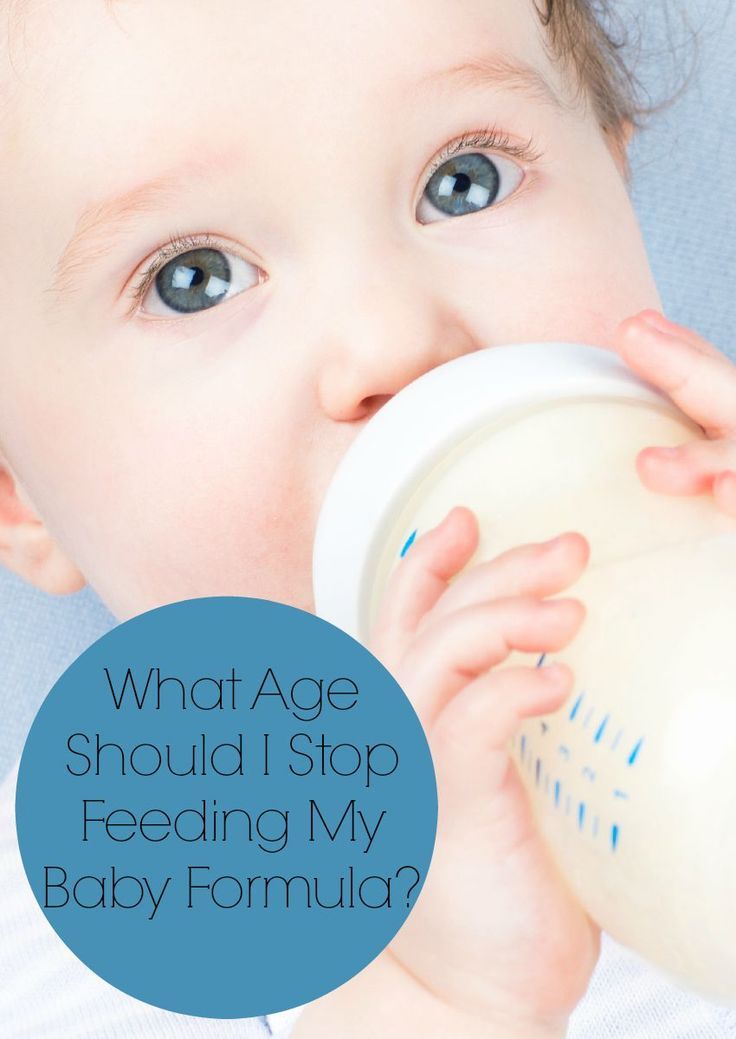 How exactly to treat her, she decides, not the child. Usually mothers are against biting, nipple twisting, feeding in an uncomfortable position, but they can allow it over and over again. What to do?
How exactly to treat her, she decides, not the child. Usually mothers are against biting, nipple twisting, feeding in an uncomfortable position, but they can allow it over and over again. What to do?
There are several rules:
- Do not let it hurt or hurt;
- Prohibitions are categorical, but calm;
- On the example of bites: first we take out the breast, move the baby away and say: “Mom hurts” or “you can’t bite.”
- It is important to be calm and persuasive. Never smile. The following is an alternative. The baby will definitely understand you: “we eat affectionately” and re-offer the breast.
- If the baby continues to bite, the mother repeats step 3 and moves the baby away from the breast for about 5 minutes.
- When you try again, the distance time increases. Mom is still there and calm. Usually the case is resolved in a day, but with a formed habit, it may take more time.
How many feedings does a child need at night
Like this article? Rate:
Votes: 27
How and when to wean the baby from night feedings
08/05/2014
88
There is not a single mother who would not ask herself the question - how to wean the baby from night banquets. And is it necessary to do this: after all, if the baby wakes up, it means he is hungry, if he is hungry, he grows, and if he grows, he must eat ... But children are actively growing up to 18 years old, what now to arrange one more (or more than one) late dinner for the next couple of decades Let's figure it out.
And is it necessary to do this: after all, if the baby wakes up, it means he is hungry, if he is hungry, he grows, and if he grows, he must eat ... But children are actively growing up to 18 years old, what now to arrange one more (or more than one) late dinner for the next couple of decades Let's figure it out.
Assessing the situation
Before deciding that a child should wean from night feedings, it is necessary to consult a pediatrician.
On average, pediatricians report that many babies are ready to sleep 11-12 hours without supplementation at 6-9 months of age.
However, we are talking about healthy, well-developing children. Toddlers who, for one reason or another, are underweight are forced to eat smaller and more frequent portions - with such children, the opinion of an observing specialist is especially important!
The next step is to look at the baby's behavior during night feedings. Evaluate how and how much the child wakes up at night. If the baby is breastfed, is he actually eating? A baby who wakes up to eat sucks actively, and you may hear intermittent swallowing. The duration of feeding, which is aimed at satisfying hunger, should be no shorter than 10-15 minutes. If the baby simply sucks on a couple of sips, and then quietly falls asleep, wakes up more often 1-2 times a night after reaching 6 months of age and his awakenings become more frequent in the morning, then it's not about hunger. Such a baby has formed a negative association between sleep and feeding, in other words, he does not know how to fall asleep without a breast, and therefore it is time to teach him this. And in the process, the baby will stop waking up at night.
If the baby is breastfed, is he actually eating? A baby who wakes up to eat sucks actively, and you may hear intermittent swallowing. The duration of feeding, which is aimed at satisfying hunger, should be no shorter than 10-15 minutes. If the baby simply sucks on a couple of sips, and then quietly falls asleep, wakes up more often 1-2 times a night after reaching 6 months of age and his awakenings become more frequent in the morning, then it's not about hunger. Such a baby has formed a negative association between sleep and feeding, in other words, he does not know how to fall asleep without a breast, and therefore it is time to teach him this. And in the process, the baby will stop waking up at night.
If the baby is formula fed or drinks milk or water, you may see huge amounts of liquid/formula that the baby consumes overnight.
Mothers with children who drink up to 1.5 liters of compote per night came to me for consultations!!!
This seriously interferes with the restorative sleep of both the child and the mother (who still has to spin around the house all day). Moreover, it loads the kidneys, urinary system and digestive tract of the baby, which should rest at night. If you are familiar with this situation, then again it needs to be changed.
Moreover, it loads the kidneys, urinary system and digestive tract of the baby, which should rest at night. If you are familiar with this situation, then again it needs to be changed.
Another factor that often occurs when nighttime feedings become intolerable is the replacement of daytime meals with nighttime ones. In other words, for various reasons, the child does not eat enough during the day and is forced to get the necessary calories at night. In this version, the mother urgently needs to work on identifying the reasons why the child is malnourished during the day, eliminating them and properly organizing the feeding regime - sleep will follow by itself.
Once you understand the causes of frequent nighttime snacking, you will be able to properly plan to overcome them. And remember, not all adults can survive 12 hours without going to the fridge, so the last night feed could well be delayed up to 12 months.
Breastfed babies
For breastfed babies who have formed an association between feeding and falling asleep (the norm is up to 4 months, but not for older babies), it is important to understand that they themselves can fall asleep perfectly without the help of "magic" mother's nipple .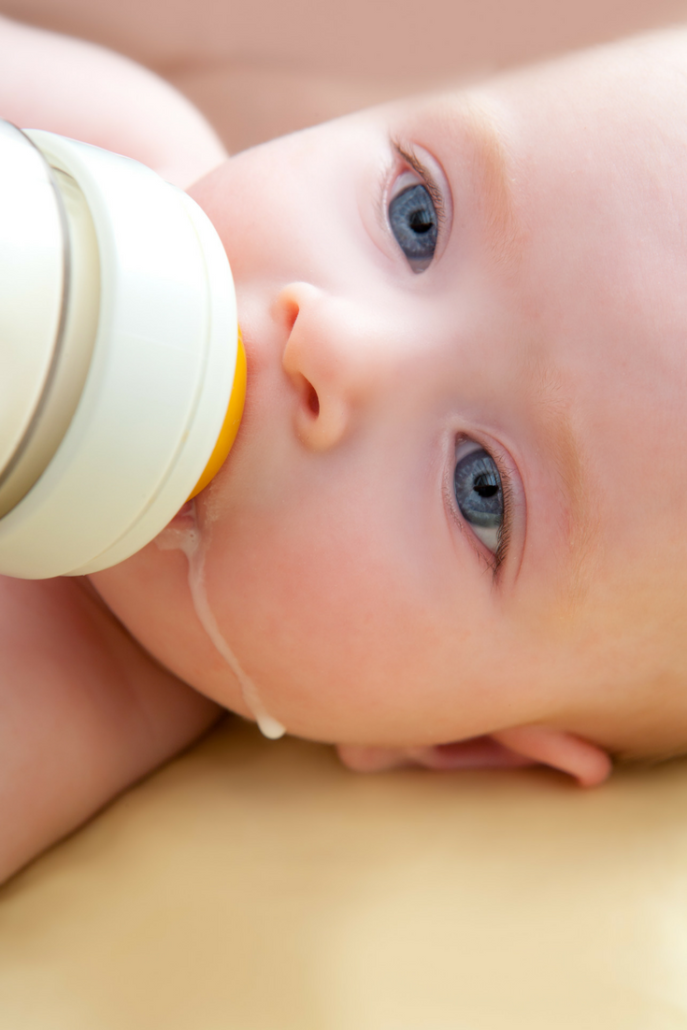 To do this, separate the process of laying down and feeding so that the baby does not fall asleep on the breast, for example, feed, change the diaper, and then lay down. Your task is to ensure that the baby, having eaten, falls asleep on his own. For night feedings, turn on a dim night light to make it clear that eating and sleeping occur in different settings, and if possible, do not feed in the sleeping area at all. If the baby is still small, and you understand that he needs one or two feedings, but the available six are already too much, then determine the time at which you are ready to feed fully.
To do this, separate the process of laying down and feeding so that the baby does not fall asleep on the breast, for example, feed, change the diaper, and then lay down. Your task is to ensure that the baby, having eaten, falls asleep on his own. For night feedings, turn on a dim night light to make it clear that eating and sleeping occur in different settings, and if possible, do not feed in the sleeping area at all. If the baby is still small, and you understand that he needs one or two feedings, but the available six are already too much, then determine the time at which you are ready to feed fully.
I recommend no earlier than 12 at night and no later than 5 am, and on other awakenings, offer water from a sippy cup (not from a bottle with a pacifier!).
As an option, you can gradually reduce the duration of feedings after hours, but in practice, this is not very effective. And do not rush to run to a baby older than 5 months at the first peep, it is very possible that you yourself wake up a baby who just whimpered in his sleep, wait a few minutes. Usually, if the mother is set on the result, then it is visible after a couple of nights, although they can be difficult. However, remember that just as food is food for the body, so sleep is food for the brain and its importance is in no way inferior to food. And the more restful sleep at night you'll get in just a few days is well worth the effort.
Usually, if the mother is set on the result, then it is visible after a couple of nights, although they can be difficult. However, remember that just as food is food for the body, so sleep is food for the brain and its importance is in no way inferior to food. And the more restful sleep at night you'll get in just a few days is well worth the effort.
Formula-fed babies
Formula-fed babies often, contrary to popular belief, sleep no better than babies. And this is just confirmation that not only hunger wakes children at night. Moreover, for artificers, it is especially important to observe the feeding regimen so as not to overload the digestive system with a more slowly absorbed mixture. Again, decide how many feedings your baby needs. With the remaining feedings, you can reduce the amount of formula in the bottle by 20-30 grams each night until you get to 30-50 grams, at which you will simply stop offering food if the baby is still waking up.
Alternatively, you can gradually dilute the mixture in a larger proportion with water until you get to the water - the children themselves refuse such a "delicacy".
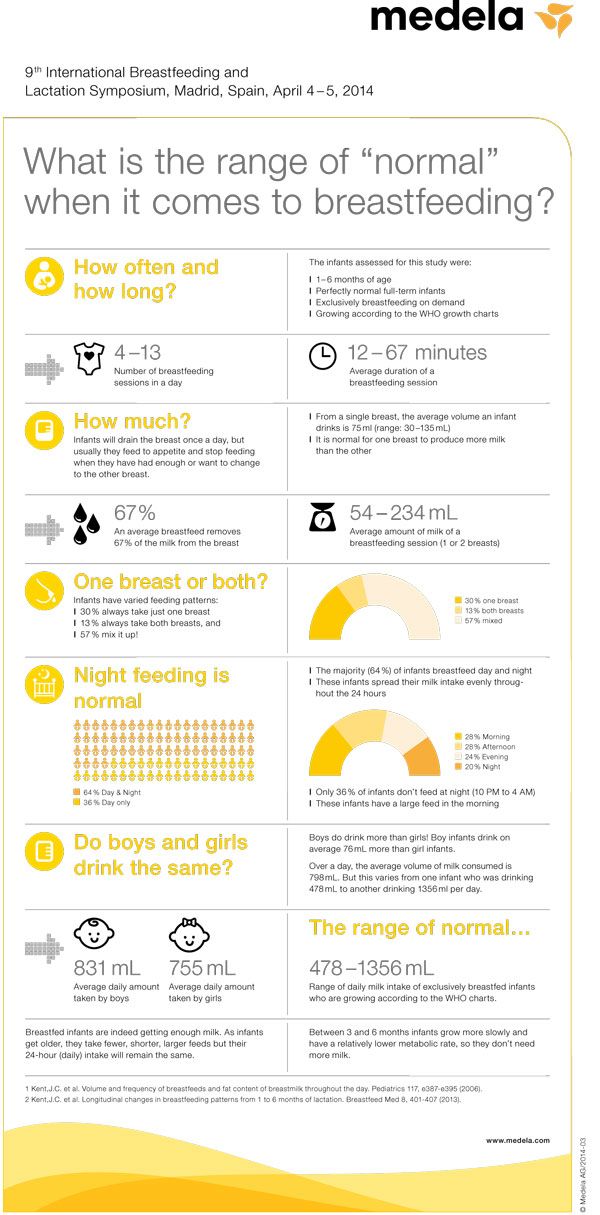
If age permits, ditch the bottle and switch to a soft spout cup.
"Adult" children after 18 months
If your child has already grown up, but still endlessly drinks water-tea-milk-compote at night, then you are dealing with a negative association, the nature of which I described above. More often, these babies drink from a bottle and the focus of their awakenings is not in thirst, but in the nipple. Sucking on the nipples reproduces, to some extent, breast sucking and powerfully helps to relax to the extent that babies get used to relaxing in sleep the only way. The first thing to do is to replace the bottle with a drinker, its spout is very different from the nipple and this is enough for many babies to stop “wanting” to drink at night. If you drink compote or tea, then it makes sense to dilute them little by little. In this way, you will reduce the amount of sugar that is harmful to very delicate teeth. When it comes to older babies, it is worth putting a drinking bowl next to the crib and explaining that they themselves can reach it and drink if necessary.